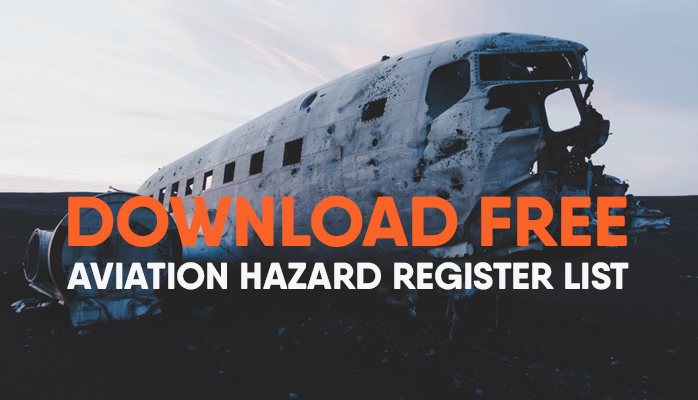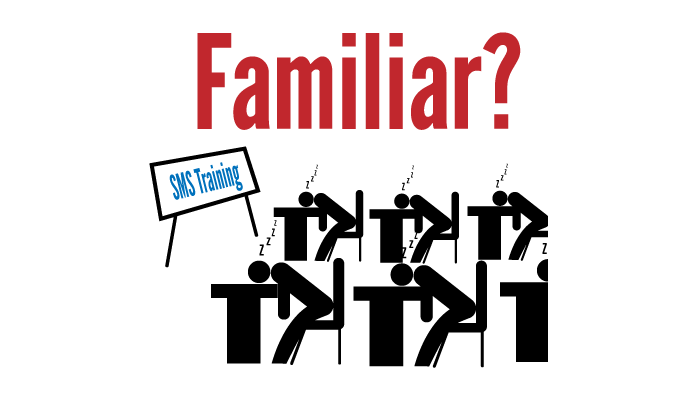In the fast-paced, data-intensive world of aviation, safety is non-negotiable. For aviation safety managers and accountable executives, implementing an effective Safety Management System (SMS) is critical to ensuring operational safety and regulatory compliance. However, one of the biggest challenges new safety managers face is analyzing SMS data to make informed, data-driven decisions.
Without a clear starting point, the wealth of data can feel overwhelming.
Read More
Topics:
Key Performance Indicators,
Aviation SMS Database,
3-Safety Assurance,
Risk Management Software,
2-Safety Risk Management,
Risk Management Training,
FAA Compliance
Aviation safety managers operate in a high-stakes environment where precision, vigilance, and continuous improvement are non-negotiable. To maintain and enhance safety standards, defining Key Performance Indicators (KPIs), establishing robust feedback mechanisms, and integrating Situational Awareness (SA) into safety management systems are critical.
This comprehensive guide provides actionable steps to achieve these goals, ensuring compliance with regulations, improving operational efficiency, and fostering a culture of safety.
Read More
Topics:
Key Performance Indicators,
3-Safety Assurance,
2-Safety Risk Management
For new aviation safety managers, preparing for Safety Management System (SMS) audits is a formidable challenge, especially when it involves coaching accountable executives and training staff on SMS concepts.
With limited experience, knowing where to start can feel overwhelming. At the heart of effective SMS implementation lies a clear understanding of ICAO Annex 19, the International Civil Aviation Organization’s cornerstone document for safety management. This global standard provides the framework for SMS, guiding organizations worldwide to enhance safety and meet regulatory expectations.
Read More
Topics:
Aviation SMS Implementation,
4-Safety Promotion,
3-Safety Assurance,
1-Safety Policy,
2-Safety Risk Management,
Risk Management Training
SMS Software Enhances Aviation ERPs
A critical component of aviation safety management is aviation emergency response planning, which ensures organizations are prepared to handle crises swiftly and effectively. Safety Management System (SMS) software, such as SMS Pro, plays a pivotal role in streamlining these processes, enhancing compliance with global standards, and improving operational resilience. This article explores how SMS software transforms emergency response planning, with a focus on SMS Pro’s powerful tools for incident management, workflow automation, and regulatory compliance.
Read More
Topics:
Aviation SMS Database,
Risk Management Software,
2-Safety Risk Management
For new aviation safety managers, preparing for a Safety Management System (SMS) audit can feel like navigating uncharted skies. A critical challenge is ensuring that accountable executives—senior leaders like CEOs, directors, or operations managers—understand and fulfill their SMS responsibilities.
These executives are pivotal in demonstrating compliance to regulators like the FAA, EASA, or ICAO, yet many lack the time or technical background to dive into the aviation SMS details.
Read More
Topics:
Aviation SMS Implementation,
4-Safety Promotion,
3-Safety Assurance,
1-Safety Policy,
2-Safety Risk Management,
FAA Compliance,
Safety Culture
A robust Safety Management System (SMS) is essential for managing risks and preventing incidents. For aviation safety managers and accountable executives—senior leaders responsible for SMS oversight—fostering a strong safety culture is a critical goal.
A Hazard Risk Register, a centralized tool for documenting and managing hazards, plays a pivotal role in achieving this by encouraging proactive hazard reporting, boosting staff engagement, and reinforcing a safety-first mindset.
Read More
Topics:
4-Safety Promotion,
2-Safety Risk Management,
Risk Management Training,
Safety Culture
For aviation safety managers, training employees on Safety Management System (SMS) concepts is a critical yet challenging task. Within the high-stakes environment of aviation safety risk management, ensuring that staff understand hazard reporting, risk management, and just culture is essential for preventing incidents and maintaining compliance with standards set by the International Civil Aviation Organization (ICAO) and national civil aviation authorities like the FAA or EASA.
New safety managers often struggle to know where to start, as these concepts can seem abstract or complex to frontline workers like pilots, ground crew, or maintenance staff.
Read More
Topics:
4-Safety Promotion,
2-Safety Risk Management,
Risk Management Training
Implementing SRM in Aviation SMS Manuals
Safety Risk Management (SRM) is a core component of an aviation Safety Management System (SMS) manual, as outlined in TOC 3.1–3.7. It provides a structured process to identify, assess, and mitigate risks, ensuring compliance with International Civil Aviation Organization (ICAO), Federal Aviation Administration (FAA), and European Union Aviation Safety Agency (EASA) standards.
For safety managers, consultants, and accountable executives, implementing SRM effectively reduces operational risks by up to 30%, as achieved by a utility client.
Read More
Topics:
Aviation SMS Implementation,
2-Safety Risk Management
A robust Safety Management System (SMS) is the backbone of any organization striving to maintain operational excellence and protect lives.
For aviation safety managers and accountable executives, understanding the four pillars of SMS—Safety Policy, Safety Risk Management, Safety Assurance, and Safety Promotion—is critical to fostering a proactive safety culture and ensuring compliance with global standards like those set by the International Civil Aviation Organization (ICAO).
Read More
Topics:
4-Safety Promotion,
3-Safety Assurance,
1-Safety Policy,
2-Safety Risk Management
Aviation Safety Management Systems (SMS) are designed to proactively identify, assess, and mitigate risks to ensure safe operations. A critical component of any SMS is the hazard register, a centralized record of identified hazards, their risks, and mitigation measures.
For many aviation organizations, especially smaller operators or those in the early stages of SMS implementation, spreadsheets (e.g., Microsoft Excel or Google Sheets) are a go-to tool for managing hazard registers. But is this approach effective in the long term?
Read More
Topics:
Aviation SMS Database,
3-Safety Assurance,
Risk Management Software,
2-Safety Risk Management












